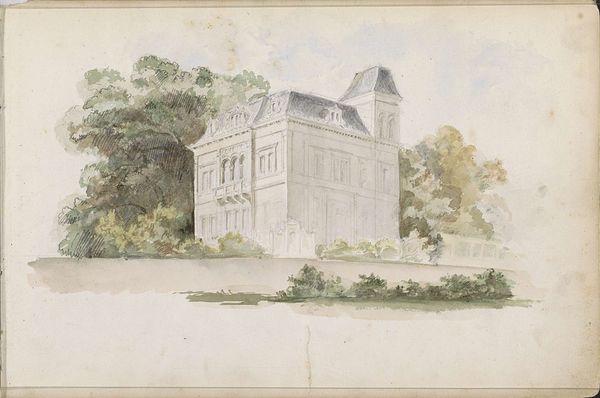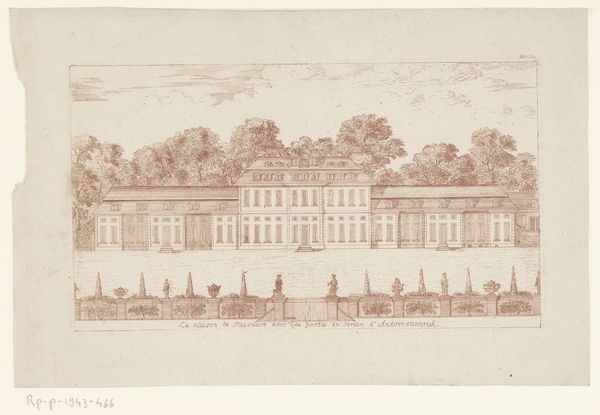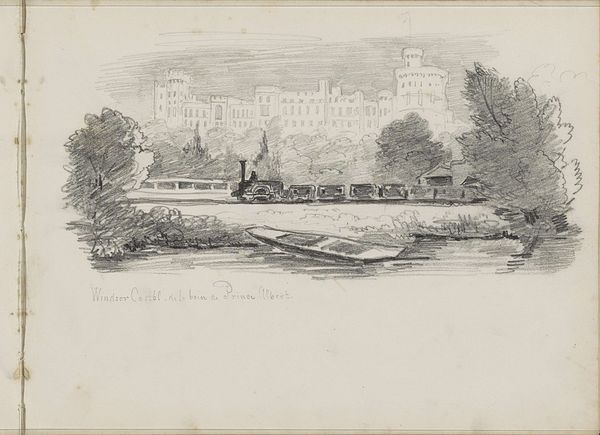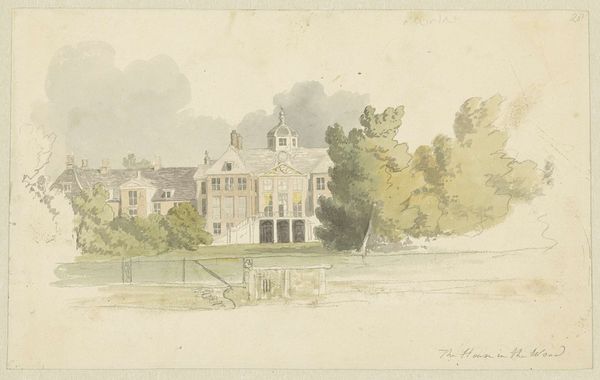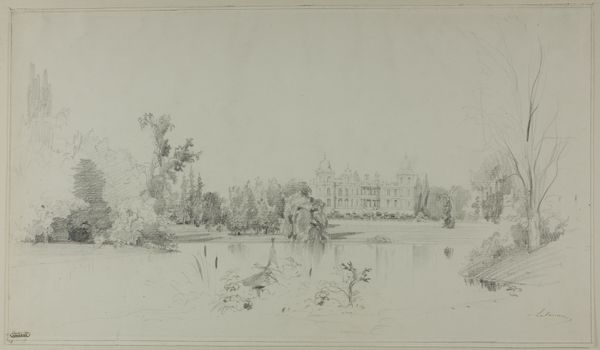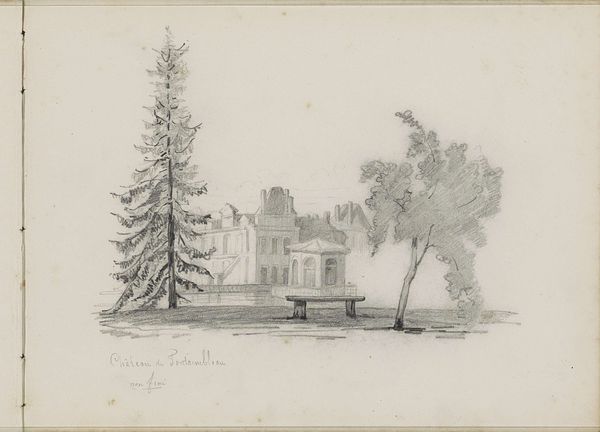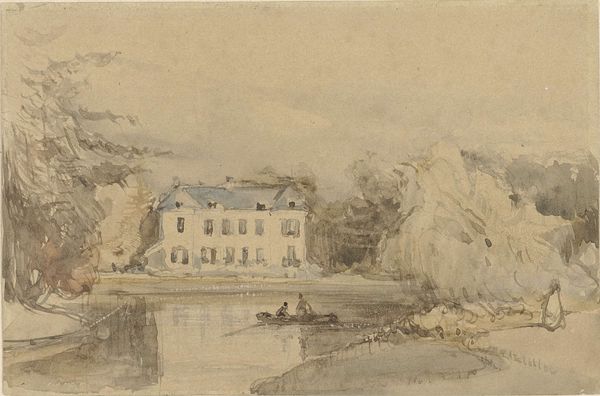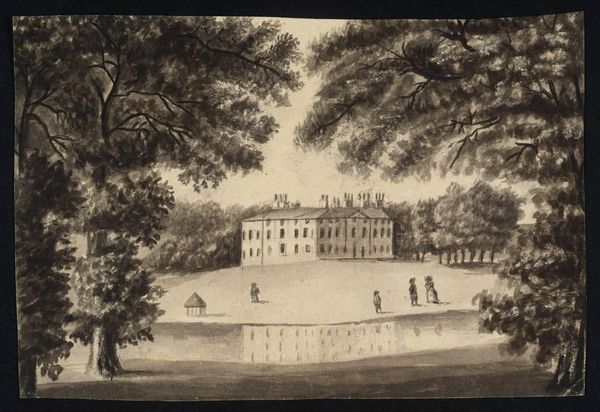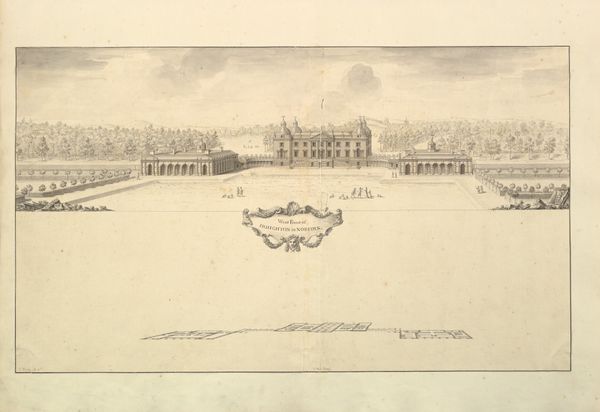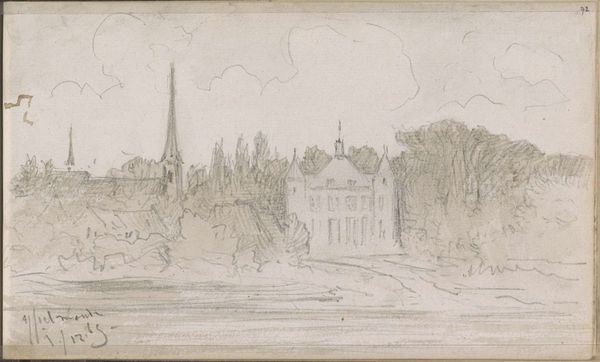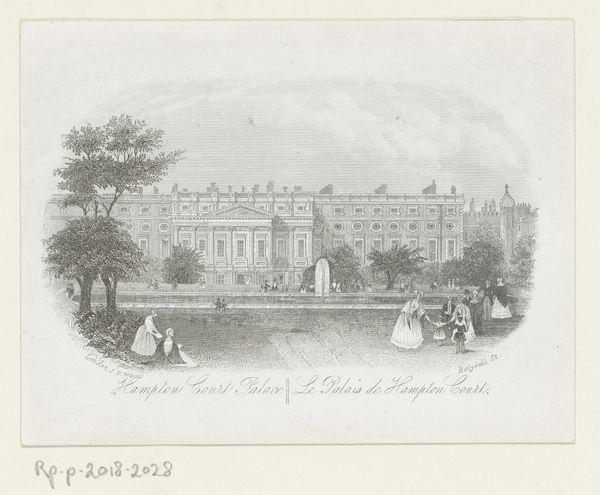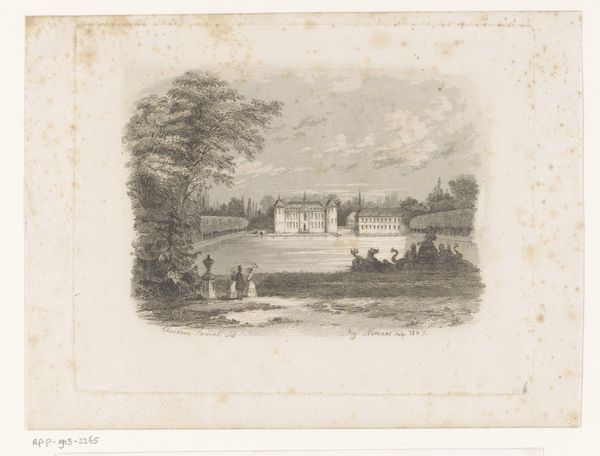
Copyright: Public Domain: Artvee
Editor: This is David Roberts’ "Montague House, Whitehall," made in 1862, a drawing using pencil and watercolor. It's quite delicate, almost dreamlike in its execution, the lines barely there. What do you see in this piece? Curator: Immediately, I see the weight of history and the ephemeral nature of memory, carefully rendered here. The building itself, Montague House, would have been a potent symbol of power and aristocracy. Notice how Roberts uses the pale washes of watercolor – the building almost dissolves into the sky, suggesting a fading of that old order. Editor: So, the wispy quality is intentional, to make us think about history's passage? Curator: Precisely. The Romantic era was fascinated by ruins and remnants, things hinting at past glories. Also consider the symbolism of water – that ever-flowing river reflects not just the building, but time itself. Notice the small boat, suggesting contemporary life continuing, even as the grand edifice stands somewhat removed from the present. What emotional reaction does the imagery stir in you? Editor: It does make me think about how things change, how even the grandest buildings become part of the landscape, their original purpose maybe fading over time. I hadn't noticed the significance of the river before! Curator: Roberts subtly invites that reflection. The power of these seemingly simple images lies in how they encapsulate layers of meaning. It speaks to the universal experience of time’s relentless flow and cultural memory, what we choose to remember and how. Editor: I'll definitely look at these landscapes differently from now on. Curator: As will I, revisiting the image myself, always looking for additional symbols in this artistic representation.
Comments
No comments
Be the first to comment and join the conversation on the ultimate creative platform.
